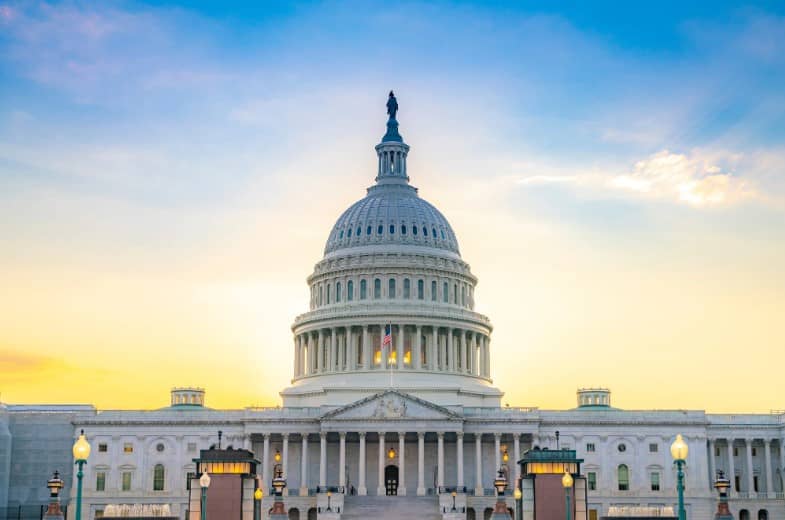
Mr Online – On March 8, 2023, General Laura J. Richardson of the United States (U.S.) Southern Command gave testimony at a congressional hearing wherein she issued a warning to U.S. lawmakers about the expansion of Chinese influence in the Caribbean that were at odds with purported U.S. interests in the region.[1]
Richardson advised policy makers in the U.S. to “pay more attention” to the Caribbean (and Central and South America) because “proximity matters.”[2] To raise the issue to a level of “threat” for U.S. policymakers, Richardson claimed that China had “increased its support for anti-U.S. regimes in the region” of which the usual suspects Venezuela, Cuba, and Nicaragua were mentioned.[3]
Although China’s investment and trade with Venezuela, Cuba, and Nicaragua are minimal in comparison to other states in the region,[4] General Richardson expresses an urgent need for U.S. reengagement with the Caribbean region–where historically this sort of engagement by the U.S. was only used to counter “threats” like communism, socialism, Black Power, and any expression of anti-imperialism.
These left leaning movements challenge U.S. interests in maintaining a global capitalist system that supports liberal theories of development via free-trade, open-markets, and privatization, for the states in its “backyard.” Washington considers growing Chinese economic ties in the region at odds with U.S. interests.
Three months after Richardson’s testimony, U.S. Vice President Kamala Harris made an official visit to The Bahamas to co-host a U.S.-Caribbean Leaders Meeting with Bahamian Prime Minister Philip Davis. Notably, it was the first time that a high-ranking U.S. official had visited The Bahamas since it gained independence in 1973.[5]
During the meeting, VP Harris stated that given “longstanding requests from Caribbean partners,” the Biden-Harris administration would be expanding U.S. diplomatic presence in the Eastern Caribbean region by opening two new embassies.[6]
However, this enhanced U.S. diplomatic presence in the Caribbean belies an earlier claim made by U.S. officials in 2018 that “the cost of establishing a United States Embassy in Antigua and Barbuda or any other member state of the Organization of Eastern Caribbean States (OECS) would be prohibitive.”[7]
Reframing U.S. and its Allies’ Security Interests in the Caribbean as “Diplomatic”
The U.S. (and its allies like Canada) are pursuing a strategy of “boosting a diplomatic presence” in the Pacific and the Caribbean, to both counter and undermine China’s investments and influence with states in these areas.[8]
The geostrategic importance of these (maritime) regions for the U.S. and its allies gained increased urgency given the Memorandum of Understanding (MoU) between China and the Solomon Islands in 2022,[9] and a cooperation agreement between China and Cuba signed earlier this year,[10] followed by subsequent unfounded speculation about China “spying” from a base location in Cuba.[11]
As it stands right now, the U.S. has a diplomatic presence in two out of the seven countries in the Eastern Caribbean. This means that realistically there are only five states where the two embassies can be built. Those are: Antigua and Barbuda, Dominica, Montserrat, St. Kitts and Nevis, and St. Lucia.
Antigua and Barbuda have aggressively made the case for a U.S. embassy to be housed in their country for a number of years, and given the announcement, they have ramped up those efforts.
There was previously a U.S. embassy in Antigua before it closed in 1994, and of OECS countries today, Antigua has the most approved visas (and highest visa burden) to the U.S. of OECS states. Antiguan Chief of Staff in the Prime Minister’s Office, Lionel Hurst, has also revealed in July of this year that Antigua has designated a plot of land for use by the U.S. government in case the island is chosen for an embassy.[12]
However, to the chagrin of the Antiguan government, U.S. officials have yet to announce which two countries will be selected to host the embassies, even as a reception was hosted by the U.S. Embassy on Jumby Bay Island to celebrate independence.[13]
While Antigua wants visa issuing streamlined for its citizens, an increased U.S. diplomatic presence in the formerly neglected Eastern Caribbean would not be aimed at alleviating visa burdens or addressing long standing requests from the region, but rather at countering China’s inroads in the region.
The U.S. is also not alone in trying to counter China’s influence in the region. U.S. Western allies in Europe are also renewing their engagement with states in the region, having hosted the third EU-CELAC summit after eight years on July 18th and 19th. At the summit, the “long-standing partnership” and “shared values and interests” were reaffirmed with the ultimate goals being transnational policing and multilateral security.[14]
Canada has also made the effort to specifically reach out to Eastern Caribbean states that could house U.S. embassies, again with the aim of making bilateral and multilateral collaborations closer.[15]
Given where Canada’s engagement has been, Antigua, St. Lucia, and Dominica are all strategically positioned to house one of the two U.S. embassies being planned for the region. Canadian officials have visited both Antigua [16] and St. Lucia [17] quite recently to discuss closer collaboration and bilateral relations–and all three countries recently became part of Canada’s visa-free travel program.[18]
Since the mid-1990s, given declining U.S. interest in its “backyard,” Canada has assumed the role of enforcing and maintaining positions that are in sync with Western capital and security objectives. Thus, in 2004, Canada not only planned the coup d’état which took place in Haiti against its democratically elected left-leader, but also helped to facilitate the entrance of U.S. troops there.[19]
Canada also has an Operation Support Hub for the Latin America and Caribbean region (OSH-LAC) stationed in Jamaica that conducts military exercises and operations in the region alongside U.S. military forces and Jamaican Defence Forces (JDF).[20] These military exercises are also framed within the language of transnational cooperation while advancing purely security aims.
Antigua,[21] St. Lucia,[22] and Dominica [23] are strategically situated islands near maritime transport lanes, the former two of which the U.S. has previously used from the early 1940s to the early 1990s to project a military presence in.[24]
Given the formation of a paternalistic army in Domnica subservient to its conservative politics, Dominica has a history of “loaning out” its bases, and officers, for U.S. (and other European) uses and training.[25]
If you were to look at a map of the Eastern Caribbean countries, a U.S. embassy in both Antigua and either St. Lucia or Dominica covers proximal grounds to the other three Eastern Caribbean countries where the U.S. has no presence. Additionally, (and historically) the conservative nature of governance in OECS states like Antigua, St. Lucia, and Dominica often saw these countries’ governments support reactionary U.S. foreign policy towards countries like Haiti and Grenada.
This history will undoubtedly come into consideration when the U.S. decides on the next locations of its two embassies in the area–just as Canada’s decision to have Jamaica host OSH-LAC considered Canada’s longtime security ties, with the JDF conducting espionage on its leftist Caribbean and South American neighbors.[26]
The current location of expected U.S. embassies is important for a number of reasons, foremost amongst them being the geographic location of the Eastern Caribbean. The Eastern Caribbean lies off of the coast of South America–where states like Venezuela are frequent targets of U.S. intervention, and where Guyana has recently had a massive amount of crude oil being extracted by Exxon.
According to Goldman Sachs, Guyana is a “geopolitical swing state” that “offers the U.S. an alternative to Venezuela” in Latin America.[27] And just as in the case of Venezuela, the U.S. and Canada seek to curtail “Chinese influence” in Guyana.[28]
For this reason U.S. politicians have recently made state visits to Guyana, attention which this country has not received since its independence in the late 1960s.[29] While it is known that states like Haiti and Cuba are frequent Caribbean targets of intervention by the U.S. and its allies–the current “diplomatic” buildup in the Eastern Caribbean should also be given attention.
Unlike Haiti and Cuba which are surrounded by a Western “diplomatic” presence that facilitates intervention, that is not the case for the Eastern Caribbean which, if brought into a similar security orbit as countries like Jamaica, can be swayed to agree to intervention in the Caribbean and in South America. As a bloc, an important goal of the OECS is to coordinate foreign policies, wherein these Eastern Caribbean states meet yearly to “harmonize the[ir] strategy in foreign policy” given their individual size.[30]
This point is not to belie the general re-engagement of the U.S. and its allies in the Caribbean region as a whole. For instance, it is still the case that Haitians are protesting against foreign intervention in their country,[31] and the U.S. is also doing upgrades to its embassy in Cuba after years of neglect.[32]
History Matters: How U.S. Embassies in the Caribbean Help U.S. Security
As has been disclosed, the U.S. embassy in Antigua closed in 1994 “because of the strategic insignificance of [the Eastern Caribbean]” and “to shift resources to Eastern Europe and the former Soviet Union” (Griffith 1996, p. 25).[33] As such, it comes to no surprise that the U.S. has long considered the value of the Caribbean in purely strategic terms as it regards competition with other “powers.”
In fact, “it took congressional pressure, especially from the Black Caucus, to reverse the decision on [closing] Grenada[‘s]” embassy (Griffith 1996, p. 25), given the U.S. invasion a decade prior following internal turmoil of the Grenadian Revolution.[34] Prior to 1994, Washington deployed a diplomatic and military presence in these countries to counter Marxist, communist, and potential revolutionary left movements in the Eastern Caribbean states. Most notably, repressing revolutionary fervor helped in the creation of the OECS during Ronald Reagan’s tenure as U.S. President and continued under Bill Clinton’s presidency.[35]
Increased globalization via the proliferation of neoliberal policies and structural adjustment in the Caribbean during the late 1980s and into the 1990s, meant that U.S. security interests in the Caribbean no longer needed to be diplomatically supported, as economies in the Caribbean opened, privatized, and became debt burdened–otherwise, dependent. Propaganda tactics that U.S. embassies helped to proliferate became less necessary as the “threat of communism” declined in its “backyard.” Also, in the Eastern Caribbean, the recession in the 1980s and the end of the Cold War marked an official deprioritization of the area in U.S. geostrategy; especially due to successful interventions against, and/or failures of, revolutionary and left-reformist groups and governments in that area.
The interests that did remain were largely in the security realm regarding narcotics, border patrolling, military and police training, as well as technology and equipment testing and upgrades.
Typically, a U.S. embassy “has officials to gather information and perform “liaisons” on political, economic, commercial, military, scientific, intelligence, financial, maritime, labor, agricultural, aviation, law enforcement, tax, educational, cartographic, geodesic, and geological matters”[36] (Schmitz 1995).
This kind of information became unimportant to collect in the Caribbean, when the region became successfully integrated into the U.S. preferred liberal regime of political and market governance.
The effects of this lack of data have been noted, as it is partly one of the reasons why general data gathering on Caribbean states is difficult. Instead, security assistance became the preferred method of engagement with the Caribbean–with “security threats” mostly involving external mandates regarding immigration, general policing, drugs, and surveillance for “antiterrorism.”[37]
Renewed interest on the part of the U.S. to open new embassies in the Eastern Caribbean region means that the U.S. security state and U.S. policy makers perceive Chinese investments as a threat–thus, we should expect these two new embassies to have a broader security purpose. The People’s Republic of China (PRC) and its ruling Communist Party invoke this history of the U.S. “fighting communism.”
More accurately, the U.S. was fighting democratically elected left-governments and movements in the Caribbean region during these states’ national liberation movements and after they achieved independence during the “Cold” War. It is quite logical to surmise that increased economic investments by the PRC which fund big infrastructure projects in the region worry U.S. policy makers.
PRC investments are often compared to Caribbean states’ decades-long integration into the liberal regime, which has not alleviated poverty, unemployment, inequality, or environmental destruction in the region.
Influence is only gained where it makes sense, and PRC investments that provide infrastructural, developmental, and economic assistance stand in stark contrast to the preferred Western strategies of aid with strings attached, which indebts Caribbean states, privatizes Caribbean economies, and continues to ignore Caribbean calls for reparations.
Increased U.S.“diplomatic” presence in the Caribbean, in response to economic investments made by the PRC, reminds us that “states are not equally free to act across the globe,” and that the existence of spheres of influence are more accurately described as geostrategic security zones for extending the influence of states..[38]
That the U.S. plans to increase its diplomatic presence in the Caribbean now should be understood as another ploy of external subversion–which exploits Caribbean people’s needs (i.e. the ability to to process visas)–to advance U.S. geostrategic aims vis-a-vis the PRC
CLICK HERE TO JOIN OUR WHATSAPP GROUP
Advertise with the mоѕt vіѕіtеd nеwѕ ѕіtе іn Antigua!
We offer fully customizable and flexible digital marketing packages.
Contact us at [email protected]


















Well, well, well! I’m no great fan of China 🇨🇳, but how can the US (or come to that, the UK or any other European nations) dictate to the Caribbean region who can or who cannot invest with us.
I would love to hear from our Prime Minister’s about his own take on this “monetary shackled & chained” development, especially when you take into account the amount of financial commitments, collaborations, and construction Antigua has with The Republic of China 🇨🇳.
HE WON’T RESPOND, BUT THE MANY INDEPENDENT THINKING ANTIGUANS WOULD LIKE TO KNOW …
… can you imagine the furore if our Prime Minister put his head above the PARAPET and told the US to stop investing in countries, like for example – the Ukraine? 🇺🇦
Our Prime Minister would be TOTALLY ignored wouldn’t he. Then why can’t he do the same to the USA’s overt overtures with countries they don’t see eye to eye with?
Are we really FREE to do as we see fit for Antigua & Barbuda’s future financial and fiscal growth?
Just putting the other side for balance folks!
Wow 😳😳 wow You are late Former Secretary of State Madelyn Albright had warnet the United States of their action towards the Caribbean and Latin America Ms Richardson they turn their Backs on us Chinese devolvement across the Caribbean in infrastructure compared to the US there is nothing that you can talk about In the seventies Canadians had built across the Caribbean Schools Airport what says the US a few in the early eighties you had some Factories across the Caribbean they were then move to China for cheaper labor So you created the problem that cannot be repaired Now my Antigua how are you going to address the Chinese Plans for the massive investment the government of Antigua given the Chinese permission to build an Embassy rather than we build properties for them to occupy and rent we gave them Lands to build look at the plan for the Prime Minister Constituency by the Chinese Are the US going to build an Embassy in Antigua
Oh they finally woke up and realize that China footprint is increasing in their backyard…well they need to give more to these begging Caribbean nations than China does ..starting with Antigua and Barbuda 🇦🇬 because when china’s warships and submarines begin to make port call America 🇺🇸 will shit on itself.
Comments are closed.